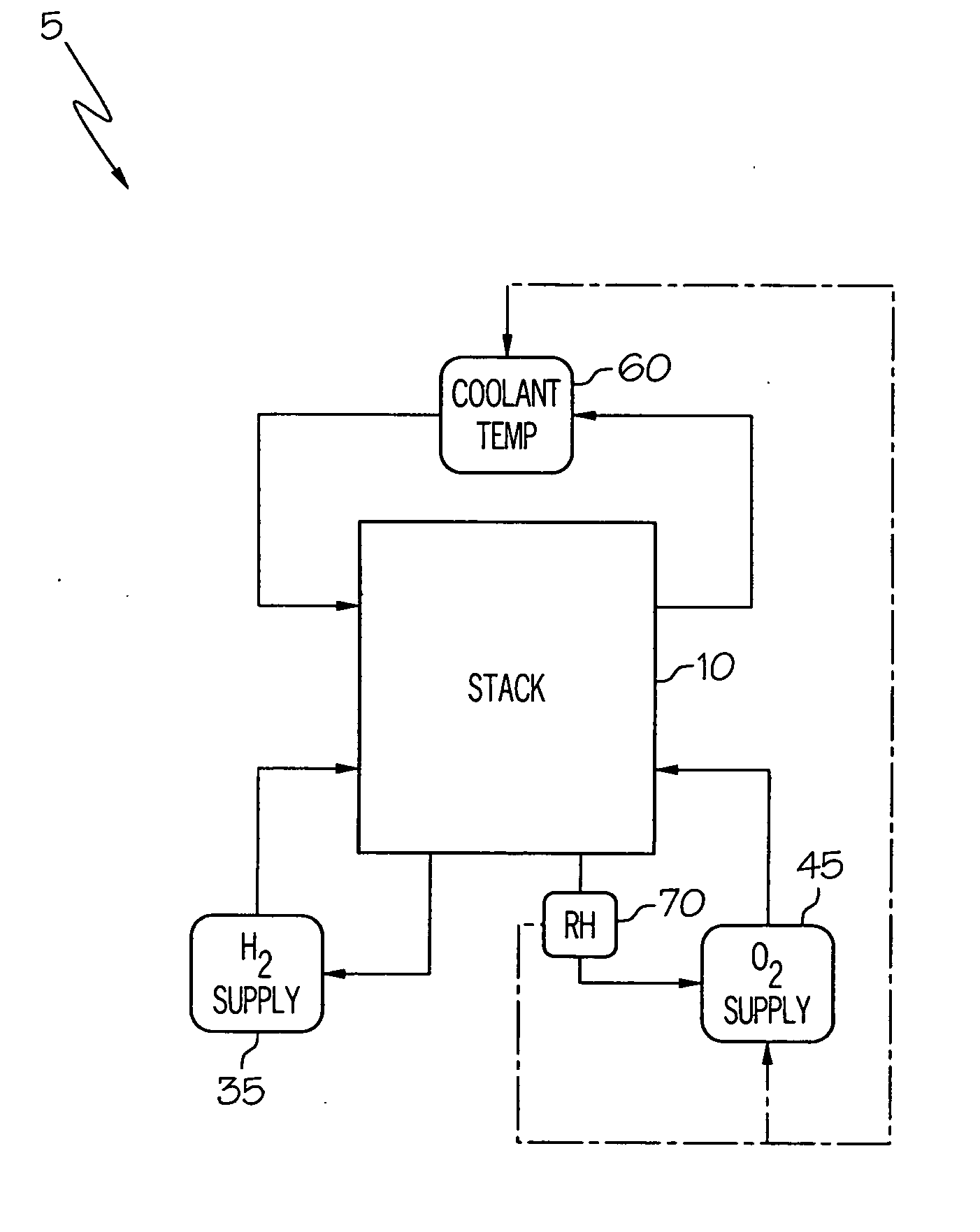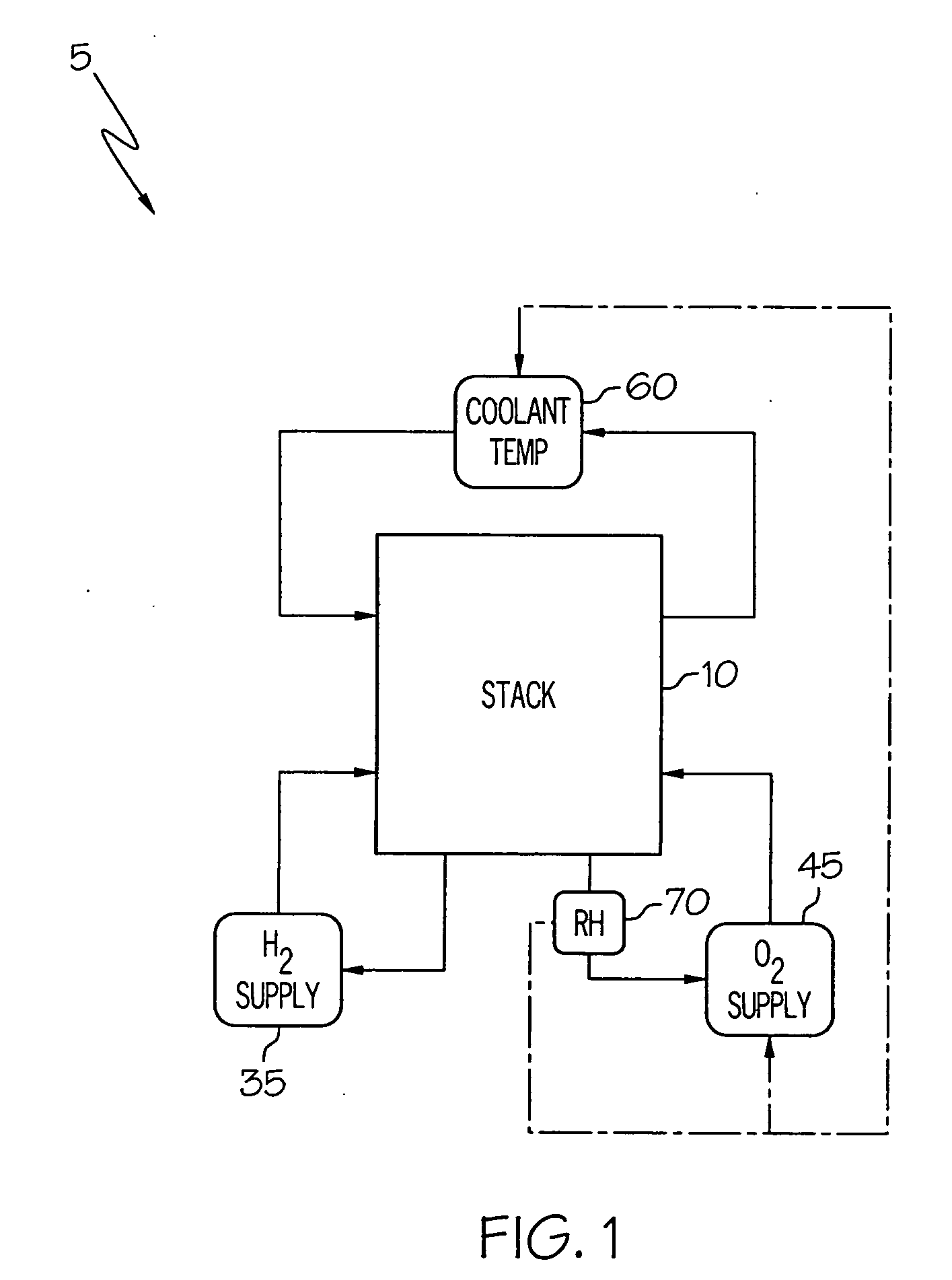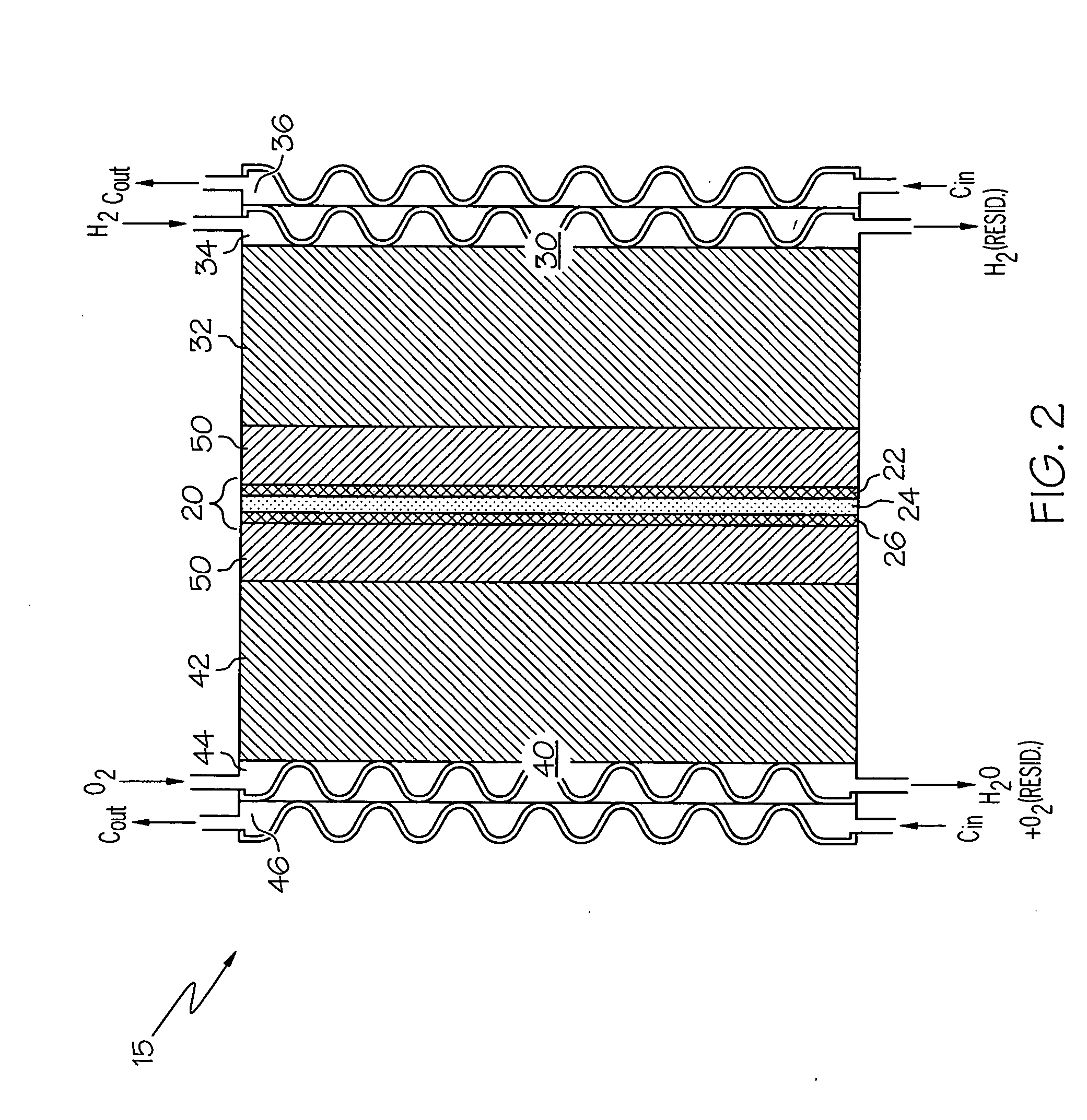Control of RH conditions in electrochemical conversion assembly
a technology of electrochemical conversion and control conditions, applied in the field of electrochemical conversion cells, can solve the problem that the voltage provided by a single cell unit is typically too small for useful applications, and achieve the effect of reducing, eliminating, or reducing excessive humidity in the flowfield portions
- Summary
- Abstract
- Description
- Claims
- Application Information
AI Technical Summary
Benefits of technology
Problems solved by technology
Method used
Image
Examples
Embodiment Construction
[0011] Referring to FIGS. 1 and 2, as will be appreciated by those familiar with fuel cell system and fuel cell stack design, fuel cell systems 5 typically comprise a plurality of electrochemical conversion cells 15 arranged or “stacked” to form an electrochemical conversion assembly 10. For the purposes of describing and defining the present invention, it is noted that many of the components and functional features illustrated in FIGS. 1 and 2 are presented by way of example and not limitation, and merely relate to the general construction and operation of fuel cell systems. As such, the particulars of many components illustrated in FIGS. 1 and 2 are beyond the scope of the present invention and may be gleaned from any suitable source covering such systems.
[0012] For example, referring to the electrochemical conversion cell 15 illustrated in FIG. 2, the cell 15 is configured to convert first and second reactants R1, R2, to electrical energy. The illustrated cell 15 comprises a mem...
PUM
 Login to View More
Login to View More Abstract
Description
Claims
Application Information
 Login to View More
Login to View More - R&D
- Intellectual Property
- Life Sciences
- Materials
- Tech Scout
- Unparalleled Data Quality
- Higher Quality Content
- 60% Fewer Hallucinations
Browse by: Latest US Patents, China's latest patents, Technical Efficacy Thesaurus, Application Domain, Technology Topic, Popular Technical Reports.
© 2025 PatSnap. All rights reserved.Legal|Privacy policy|Modern Slavery Act Transparency Statement|Sitemap|About US| Contact US: help@patsnap.com



